- Visibility 299 Views
- Downloads 36 Downloads
- Permissions
- DOI 10.18231/j.ijrimcr.2024.056
-
CrossMark
- Citation
Prevalence of obesity in Kirkuk governorate/Iraq
Abstract
Our aim in this study was to estimate the prevalence of overweight and obesity and their association among adults in Iraq, particularly in Kirkuk governorate. Data from a representative cross-sectional survey at the governorate level for 2024 for 425 people aged 18 years and older, men and women, who responded to the questionnaire. The results of the questionnaire were analyzed to diagnose the association of obesity with multiple factors, according to the questionnaire. To know the social, demographic, and health risk factors for obesity that can be used in the future in the Kirkuk community. We used the Microsoft Excel program to analyze the results collected from the questionnaire. The study indicated a small percentage of chronic diseases in the Kirkuk community, most of which were blood pressure, diabetes, and irritable bowel diseases. The Kirkuk community was young; most of the age rates were around the second decade of life, and the smoking rate was about a quarter. In Kirkuk society, height rates are acceptable and are around 175 cm. Body mass index rates indicate that most of the participants are overweight (25 kg/m2), and this may lead to future obesity problems among the participants. The study suggests conducting a more comprehensive survey, starting awareness campaigns about the dangers of obesity, practising the minimum amount of exercise, adhering to reasonable limits of healthy eating, and changing the sedentary lifestyle.
Introduction
More than half (55%) of all deaths in Iraq in 2016 were attributed to noncommunicable diseases (NCDs).[1] Most noncommunicable diseases are caused by malnutrition, lack of physical activity, tobacco use, and the harmful use of alcohol, leading to metabolic and physical changes including hypertension, diabetes, overweight, and obesity.[2] Worldwide, among adults, the prevalence of obesity (body mass index (BMI) 30 kg/m2) is 10.8% among men and 14.9% among women.[3] In several local surveys in sub-regions and clinical groups in Iraq, high rates of obesity were reported. For example, in a community survey (n = 1480 adults in 2017) in the city of Erbil, Iraq, the prevalence of overweight and obesity was 33.4%–40.9%, and in Basra, southern Iraq (2003–2010), the prevalence of overweight and obesity was 55.1%.[4], [5] Among non-pregnant women (n = 200, 18 years) attending outpatient clinics in Baghdad, Iraq, 39% were overweight and 37% were obese, and among their female relatives attending primary care (n = 440) in Baghdad, the prevalence of obesity reached 35.2%.[6], [7] In the 2005–2006 National Surveillance Stepwise Approach (STEPS) survey in Iraq (25–65 years), the prevalence of overweight or obesity was 66.9%.[8] To the best of our knowledge, there are no recent national adult data on the prevalence and correlates of overweight and obesity in Iraq to improve intervention planning and national risk estimates. There is a need to know the factors contributing to overweight and obesity in Iraq. In the Eastern Mediterranean region, the prevalence of overweight or obesity in adults ranges from 25% to 81.9%.[9] In 2014, in Kuwait, the prevalence was adults (18–69 years). The prevalence of overweight was 37% and obesity was 40.3%, while in 2016, in Iran, the prevalence of overweight/obesity (BMI 25 kg/m2) was 59.3%.[10], [11] In 2017, in Jordan, overweight or obesity (body mass index 25 kg/m2) reached 77.2% among men and 74.5% among women (18 years), and in Morocco, the percentage of overweight and obesity reached 35.5% and obesity was 20.6% (18 years).[12], [13] Potential risk factors for obesity in the Eastern Mediterranean region may include dietary changes, sedentary lifestyles, stunting, the promotion of high-fat foods, and body image.[9] Furthermore, the odds of overweight or obesity may increase in middle age and older age among women, and among those with higher socioeconomic status levels, illiterate women, those who have ever been married, and those residing in urban areas.[4], [5], [6], [7], [14], [15], [16], [17], [18] Some studies have shown that tobacco use is inversely associated with overweight or obesity, while poor dietary behavior, such as eating foods high in fats and sugars or insufficient fruits and vegetables, and physical inactivity are positively associated. with overweight or obesity.[16], [19], [20], [21], [22] Other studies have shown an association between overweight or obesity and non-communicable diseases, such as hypertension and diabetes.[23], [24] Systematically, depression also increased the odds of obesity.[25] The study aims to estimate the prevalence and correlates of overweight and obesity among adults in the Kirkuk governorate.
Methods
Ethical approval for the study was obtained from the University of Kirkuk (ref No. 7/27/2609 on 2/15/2924). In coordination with the Ministry of Health and Environment—Kirkuk Governorate, Health Department, the statistical analysis of the data was performed according to the form distributed to the participants. The results are then analyzed statistically according to the Microsoft Excel statistics program.
Results and Discussion
In this study, we sought to conduct a local survey of adults in Kirkuk for the year 2024 to find out the percentage of participants who suffer from overweight or obesity. Risk factors, including socio-demographic factors (average age, gender, and residence in urban or rural areas) for chronic diseases, and how to target them in interventions. And implement preventive interventions, such as programs to improve a healthy diet, appropriate nutritional policies, promoting physical health and activity, stopping sedentary behaviour, and community awareness campaigns to help reduce the high burden of overweight and obesity. As well as experimental evaluation and recommendations for future research to improve intervention strategies in this aspect of Kirkuk society.
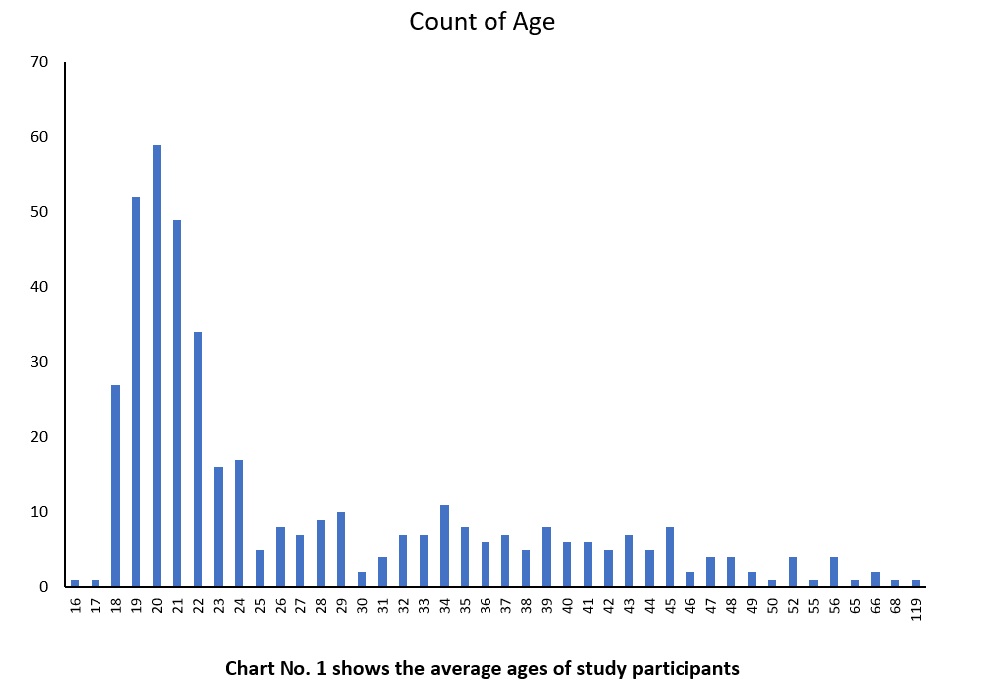
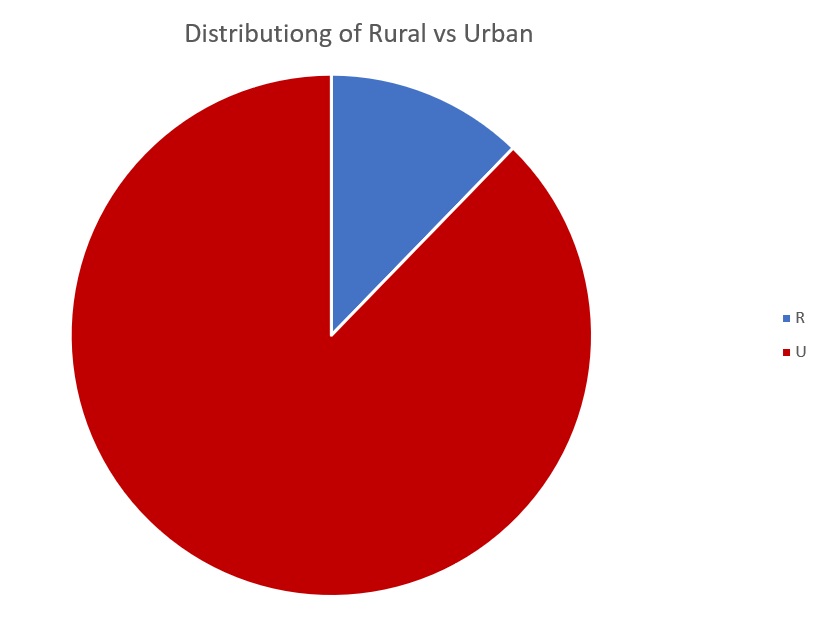

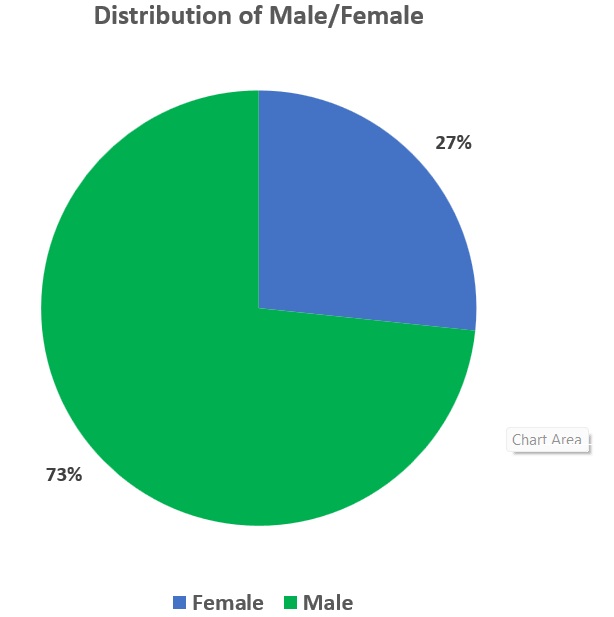
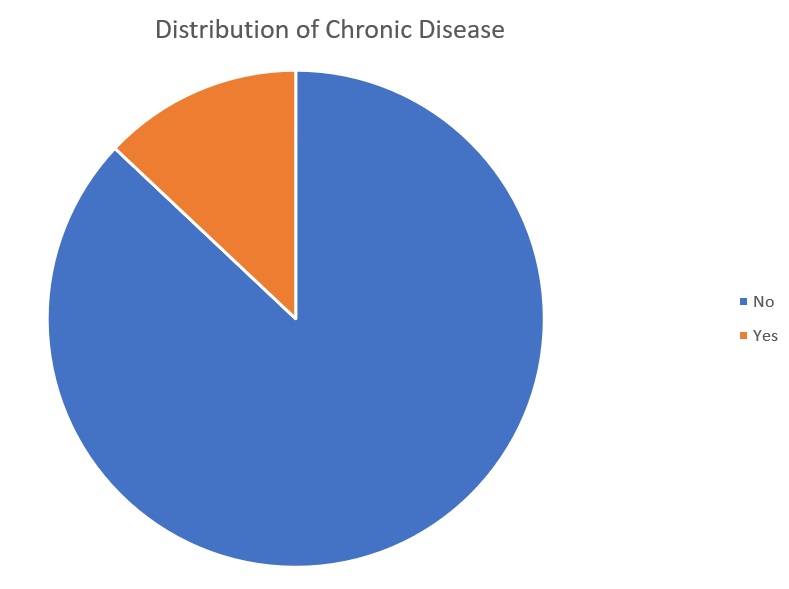
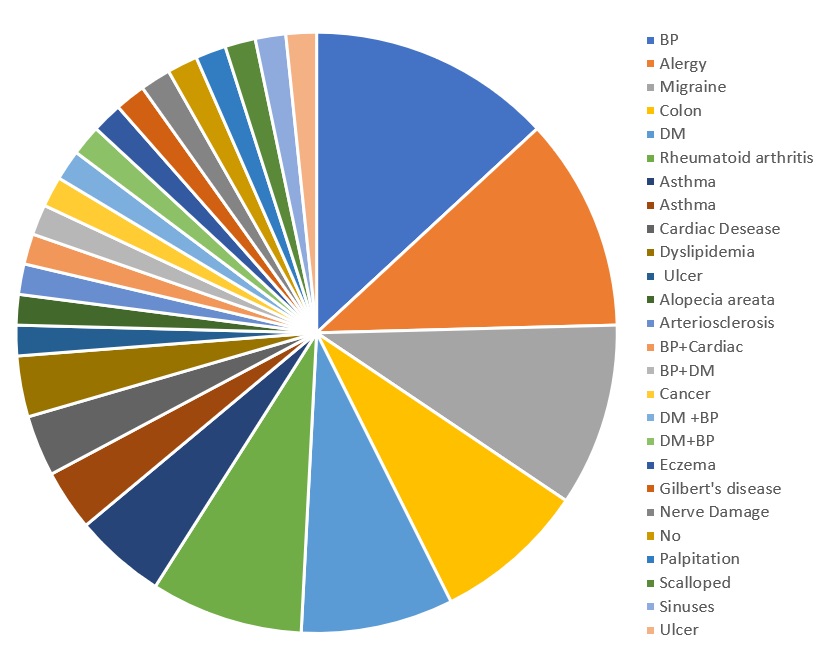
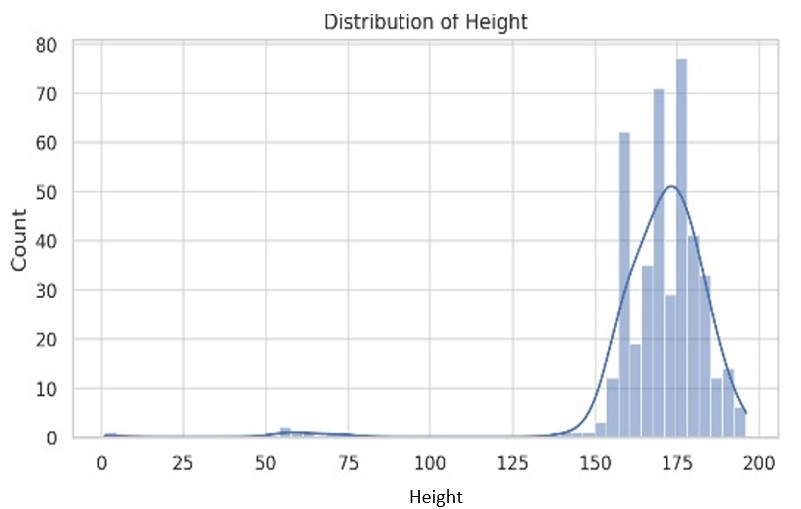
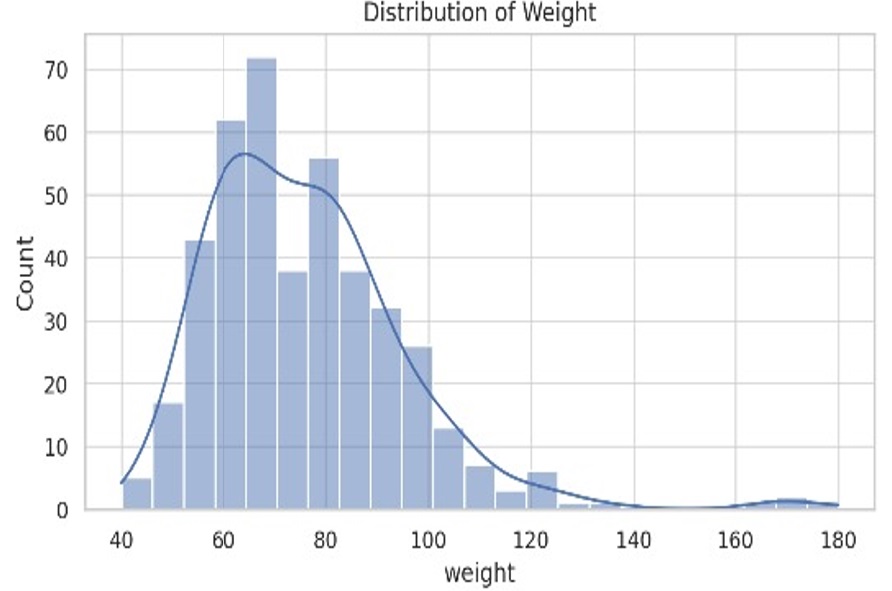
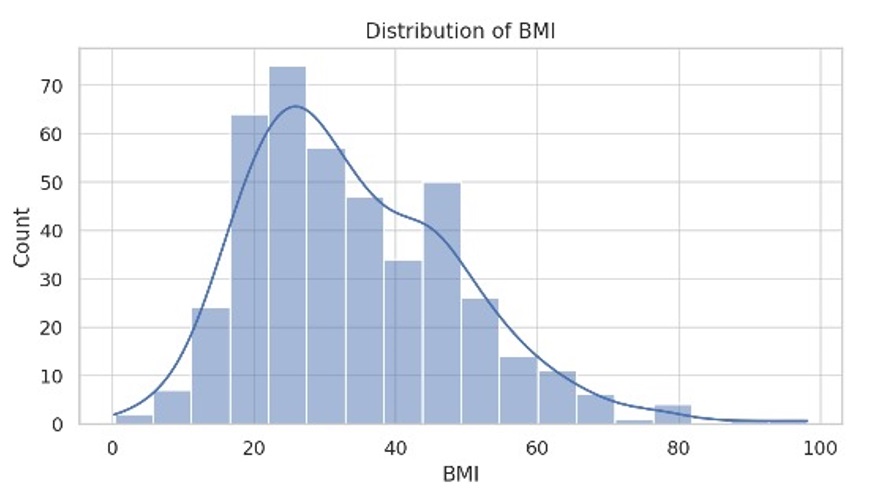
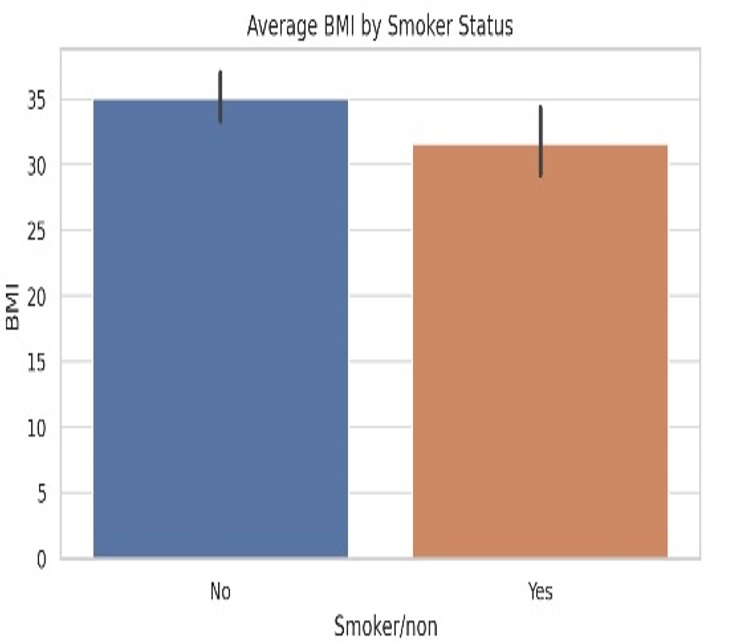
It is clear from the study that Iraq in general and Kirkuk governorate in particular lack most of the accurate information related to measurements of body mass index rates. Therefore, we find difficulty in previous citations. Therefore, this study is almost the first database specializing in body mass index rates for Kirkuk governorate.
The study, in which 425 volunteers from various urban and rural areas of Kirkuk governorate participated (12% rural residents compared to 88% urban residents), with a ratio of 73% males and 27% females, showed that those with chronic diseases in Kirkuk society were only 13%. Healthy people free of chronic diseases in the Kirkuk community are 87%, and this is a good indicator for health services in Kirkuk governorate.
Chronic diseases varied among those infected, but the most common were blood pressure diseases and their complications (13% of affected individuals). Others suffered from various allergic diseases (11%) (this may be due to multiple air pollutants). About 8% of participants were afflicted with irritable bowel diseases, which is the same percentage as the incidence of chronic diabetes among those infected (this may indicate the necessity of changing lifestyle, relieving stress, and doing some simple exercises), and the least chronic diseases were among those with stomach ulcer diseases (1%).
The percentage of smokers among the participants in this study was about 26.7%, while the majority of the participants were non-smokers (73.3%). This is a good indicator of the low smoking rate in Kirkuk society.
The average height of the participants ranged around 180 cm for most individuals, and the lowest recorded height was 150 cm, which was the least in number among the participants. In general, the average height was around 175 cm for the participating individuals.
The weight of most of the participants in the study ranged between 60 and 80 kg, with a lesser percentage of 80 and 100 kg, and the rates of high weights, 100 and 120 kg, were the lowest among the participants, which is a good indicator of the decrease in the rate of excessive obesity in the Kirkuk community.
The body mass index rate in the Kirkuk community was around 25 kg/m2 for most of the study participants; although this percentage indicates overweight, it is below obesity.[26] A small percentage of participants recorded within the normal limits of body mass index rates, and the rest ranged from a very high weight percentage to excessive obesity, as shown in[Figure 9]. The percentage of body mass index rates among smokers was lower than that of non-smokers, and this may be attributed to a loss of appetite among smokers as a result of the harms of smoking ([Figure 10]).
Conclusion
We conclude from this study that there is a small percentage of chronic diseases in the Kirkuk community, most of which are blood pressure, diabetes, and irritable bowel diseases. The Kirkuk community is a young society; most of the life expectancy rates are around the second decade of life, and the smoking rate is about a quarter in the Kirkuk community. Height rates are acceptable and are around 175 cm. Body mass index rates indicated the presence of excess weight among most of the participants, and this may lead to future obesity problems among the participants. The study suggests conducting a more comprehensive survey, starting awareness campaigns about the dangers of obesity, practicing the minimum amount of exercise, adhering to reasonable limits of healthy eating, and changing a sedentary lifestyle.
Source of Funding
None.
Conflict of Interest
None.
References
- . Noncommunicable diseases country profiles 2018. World Health Organization. 2018. [Google Scholar]
- . Noncommunicable diseases: Risk factors. World Health Organization. 2020. [Google Scholar]
- (NCD-RisC) NRFC. Trends in adult body-mass index in 200 countries from 1975 to 2014: A pooled analysis of 1698 population-based measurement studies with 19.2 million participants. Lancet. 2016;387(10026):1377-96. [Google Scholar]
- Shabu S. Prevalence of overweight/obesity and associated factors in adults in Erbil, Iraq: A household survey. Zanco J Med Sci. 2019;23(1):128-34. [Google Scholar]
- Mansour A, Al-Maliky A, Salih M. Population overweight and obesity trends of eight years in Basrah, Iraq. Epidemiology Open Access. 2012;02(01). [Google Scholar]
- Al-Tawil N, Abdulla M, Ameer A. Prevalence of and factors associated with overweight and obesity among a group of Iraqi women. East Mediterr Health J. 2007;13(2):420-9. [Google Scholar]
- Jasim H, Abdul H, Al-kaseer E. Obesity among females in Al-Sader city Baghdad, Iraq, 2017. J Fac Med Baghdad. 2017;60(2):105-7. [Google Scholar]
- Organization WH. Chronic non-communicable diseases risk factors survey In Iraq 2006. . 2006. [Google Scholar]
- Musaiger A. Overweight and obesity in eastern mediterranean region: Prevalence and possible causes. J Obes. 2011;2011. [Google Scholar]
- Weiderpass E, Botteri E, Longenecker J, Alkandari A, Al-Wotayan R, Duwairi QA. The prevalence of overweight and obesity in an adult Kuwaiti population in 2014. Front Endocrinol (Lausanne). 2019;10. [Google Scholar]
- Djalalinia S, Moghaddam S, Sheidaei A, Rezaei N, Iravani S, Modirian M. Patterns of obesity and overweight in the Iranian population: Findings of STEPs 2016. Front Endocrinol (Lausanne). 2020;11(42). [Google Scholar]
- Ajlouni K, Khader Y, Batieha A, Jaddou H, El-Khateeb M. An alarmingly high and increasing prevalence of obesity in Jordan. Epidemiol Health. 2020;42. [Google Scholar]
- Pengpid S, Peltzer K. Prevalence and correlates of the metabolic syndrome in a cross-sectional community-based sample of 18-100-year-olds in Morocco: Results of the first national STEPS survey in 2017. Diabetes Metab Syndr. 2020;14(5):1487-93. [Google Scholar]
- Mkuu R, Epnere K, Chowdhury M. Prevalence and predictors of overweight and obesity among Kenyan women. Prev Chronic Dis. 2018;15. [Google Scholar]
- Biswas T, Garnett S, Pervin S, Rawal L. The prevalence of underweight, overweight and obesity in Bangladeshi adults: Data from a national survey. PLoS One. 2017;12(5). [Google Scholar]
- Msyamboza K, Kathyola D, Dzowela T. Anthropometric measurements and prevalence of underweight, overweight and obesity in adult Malawians: nationwide population based NCD STEPS survey. Pan Afr Med J. 2013;15. [Google Scholar]
- Pengpid S, Peltzer K. The prevalence of underweight, overweight/obesity and their related lifestyle factors in Indonesia, 2014–2015. AIMS Public Health. 2017;4(6):633-49. [Google Scholar]
- Pengpid S, Peltzer K. The prevalence and associated factors of underweight and overweight/obesity among adults in Kenya: Evidence from a national cross-sectional community survey. Pan Afr Med J. 2020;36. [Google Scholar]
- Pengpid S, Peltzer K. Associations between behavioural risk factors and overweight and obesity among adults in population-based samples from 31 countries. Obes Res Clin Pract. 2017;11(2):158-66. [Google Scholar]
- Moon K, Krems C, Heuer T, Roth A, Hoffmann I. Predictors of BMI vary along the BMI range of German adults - Results of the German National Nutrition Survey II. Obes Facts. 2017;10(1):38-49. [Google Scholar]
- Carnauba R, Chaves D, Baptistella A, Paschoal V, Naves A, Buehler A. Association between high consumption of phytochemical-rich foods and anthropometric measures: A systematic review. Int J Food Sci Nutr. 2017;68(2):158-66. [Google Scholar]
- Hruby A, Manson J, Qi L, Malik V, Rimm E, Sun Q. Determinants and consequences of obesity. Am J Public Health. 2016;106(9):1656-62. [Google Scholar]
- Leggio M, Lombardi M, Caldarone E, Severi P, D'Emidio S, Armeni M. The relationship between obesity and hypertension: An updated comprehensive overview on vicious twins. Hypertens Res. 2017;40(12):947-63. [Google Scholar]
- Dibonaventura MD, Meincke H, Le Lay A, Fournier J, Bakker E, Ehrenreich A. Obesity in Mexico: Prevalence, comorbidities, associations with patient outcomes, and treatment experiences. Diabetes Metab. Syndr. Obes. 2017;11:1-10. [Google Scholar]
- Luppino F, Wit LD, Bouvy P, Stijnen T, Cuijpers P, Penninx B. Overweight, obesity, and depression: A systematic review and meta-analysis of longitudinal studies. Arch Gen Psychiatry. 2010;67(3):220-9. [Google Scholar]
- Hall D, Cole T. What use is the BMI?. Arch Dis Child. 2006;91(4):283-6. [Google Scholar]
How to Cite This Article
Vancouver
Musafer KNJ, Alsheikh SM. Prevalence of obesity in Kirkuk governorate/Iraq [Internet]. Int J Recent Innov Med Clin Res. 2024 [cited 2025 Oct 05];6(3):85-89. Available from: https://doi.org/10.18231/j.ijrimcr.2024.056
APA
Musafer, K. N. J., Alsheikh, S. M. (2024). Prevalence of obesity in Kirkuk governorate/Iraq. Int J Recent Innov Med Clin Res, 6(3), 85-89. https://doi.org/10.18231/j.ijrimcr.2024.056
MLA
Musafer, Karar Nadhum Jawad, Alsheikh, Sarah Mohammed. "Prevalence of obesity in Kirkuk governorate/Iraq." Int J Recent Innov Med Clin Res, vol. 6, no. 3, 2024, pp. 85-89. https://doi.org/10.18231/j.ijrimcr.2024.056
Chicago
Musafer, K. N. J., Alsheikh, S. M.. "Prevalence of obesity in Kirkuk governorate/Iraq." Int J Recent Innov Med Clin Res 6, no. 3 (2024): 85-89. https://doi.org/10.18231/j.ijrimcr.2024.056
